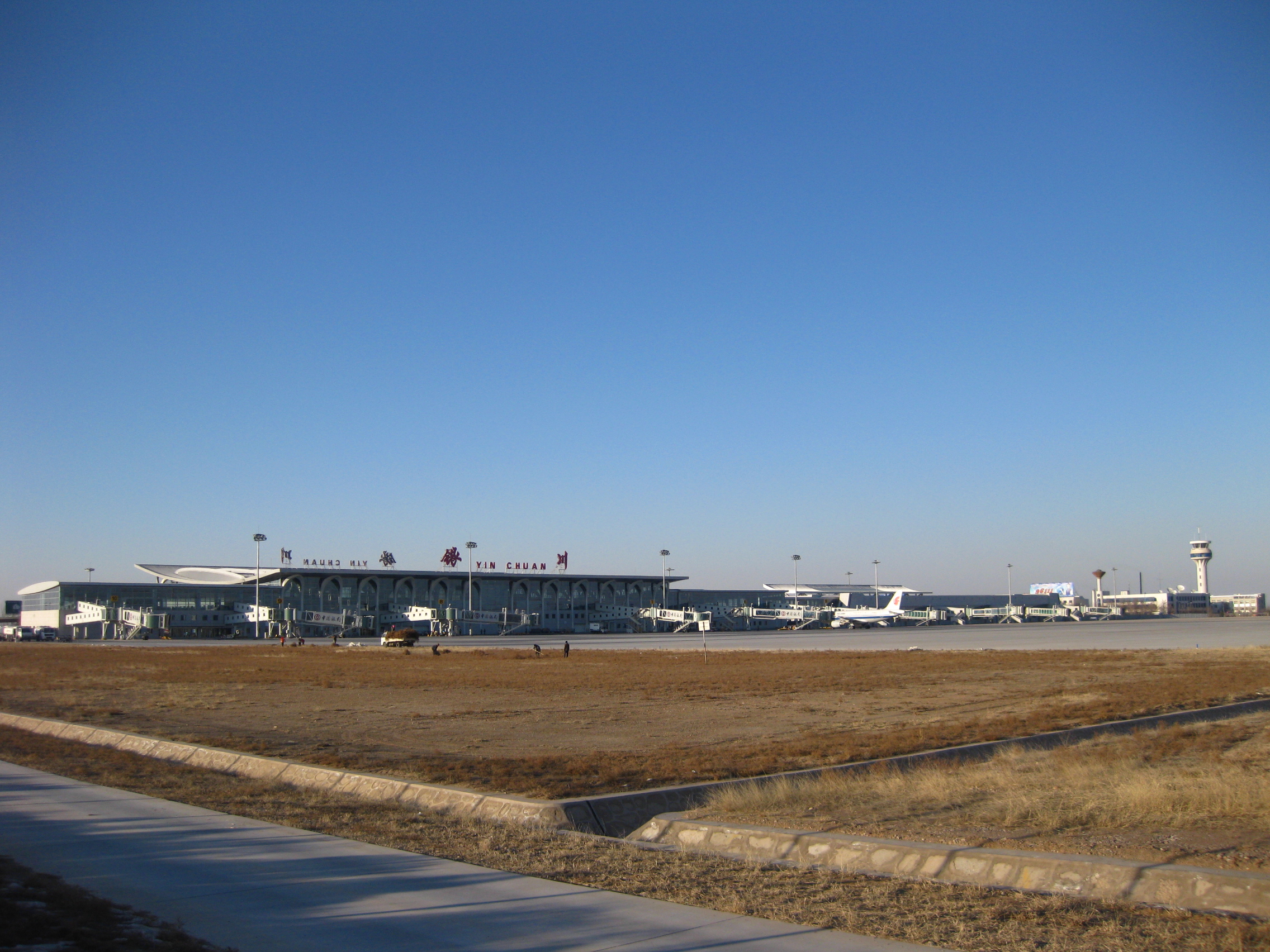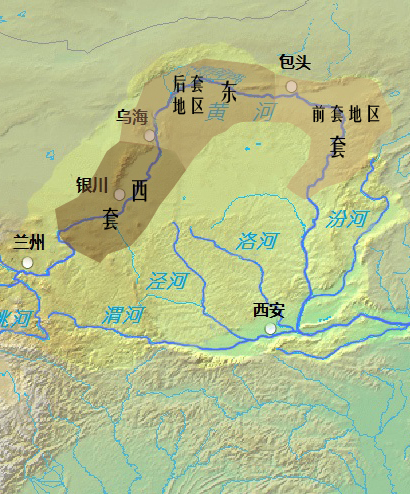|
Western Qin
The Western Qin (; 385–400, 409–431) was a dynastic state of China ruled by the Qifu clan of Xianbei ethnicity during the era of Sixteen Kingdoms. All rulers of the Western Qin declared themselves "''wang''", translatable as either "king" or "prince." They ruled an area corresponding to modern-day southwestern Gansu in Northwest China, also known as the Longxi region, along with parts of northeastern Qinghai in the later years. The state went by various different names as their rulers opted for lesser peerages while they were acting as vassals, and they were only known as "Qin" (秦) from 395 to 400, from 409 to 411 and from 414 to 431. The Western Qin was briefly discontinued in 400 after Qifu Gangui surrendered to the Later Qin before it was revived in 409. They also frequently shifted their capital from time to time, with Fuhan (枹罕, in modern Linxia, Gansu) as their longest-serving capital at 18 years without interruption. They are given the prefix of "Western" in h ... [...More Info...] [...Related Items...] OR: [Wikipedia] [Google] [Baidu] |
Former Qin
Qin, known as the Former Qin and Fu Qin (苻秦) in historiography, was a Dynasties of China, dynastic state of China ruled by the Fu (Pu) clan of the Di (Five Barbarians), Di peoples during the Sixteen Kingdoms period. Founded in the wake of the Later Zhao, Later Zhao dynasty's collapse in 351, it completed the unification of northern China in 376 during the reign of Fu Jian (337–385), Fu Jiān (Emperor Xuanzhao), being the only state of the Sixteen Kingdoms to achieve so. Its capital was Chang'an up to Fu Jiān's death in 385. The prefix "Former" is used to distinguish it from the Later Qin and Western Qin dynasties that were founded later. In 383, the severe defeat of the Former Qin by the Jin dynasty (266–420), Jin dynasty at the Battle of Fei River encouraged uprisings, splitting Former Qin territory into two noncontiguous pieces after the death of Fu Jiān. One remnant, at present-day Taiyuan, Shanxi was soon overwhelmed in 386 by the Xianbei under the Later Yan, West ... [...More Info...] [...Related Items...] OR: [Wikipedia] [Google] [Baidu] |
Gansu
Gansu is a provinces of China, province in Northwestern China. Its capital and largest city is Lanzhou, in the southeastern part of the province. The seventh-largest administrative district by area at , Gansu lies between the Tibetan Plateau, Tibetan and Loess Plateau, Loess plateaus and borders Mongolia's Govi-Altai Province, Inner Mongolia and Ningxia to the north, Xinjiang and Qinghai to the west, Sichuan to the south and Shaanxi to the east. The Yellow River passes through the southern part of the province. Part of Gansu's territory is located in the Gobi Desert. The Qilian Mountains, Qilian mountains are located in the south of the Province. Gansu has a population of 26 million, ranking List of Chinese administrative divisions by population, 22nd in China. Its population is mostly Han Chinese, Han, along with Hui people, Hui, Dongxiangs, Dongxiang and Tibetan people, Tibetan minorities. The most common language is Mandarin. Gansu is among the poorest administrative divi ... [...More Info...] [...Related Items...] OR: [Wikipedia] [Google] [Baidu] |
Jingyuan County, Gansu
Jingyuan County ( zh, s=靖远县 , t=靖遠縣 , p=Jìngyuǎn Xiàn) is a county in the east of Gansu Province. It is under the administration of Baiyin City, and consists of two separate tracts of territory to the north and south of Pingchuan District. The northern tract borders Ningxia to the north. The southern area consists of an irrigated area around the Yellow River and the northern area is semi-arid highlands. The name originated from 'settling down in the borderlands'. Jingyuan belonged to the Yiqu kingdom, later becoming part of the Qin state. The county was first established during the Han dynasty in 114 BC. During the Western Wei it was known as Huizhou (会州), the defensive outpost of Huining County. It was located at the battleground of the Northern Song dynasty and the Western Xia. In 1730 the county got its current name. In 1928, Jingyuan was transferred from Shaanxi to Gansu. Jingyuan has extensive coal reserves, part of the Yaojie Formation, as well as ... [...More Info...] [...Related Items...] OR: [Wikipedia] [Google] [Baidu] |
Ningxia
Ningxia, officially the Ningxia Hui Autonomous Region, is an autonomous region in Northwestern China. Formerly a province, Ningxia was incorporated into Gansu in 1954 but was later separated from Gansu in 1958 and reconstituted as an autonomous region for the Hui people, one of the 56 officially recognised nationalities of China. Twenty percent of China's Hui population lives in Ningxia. Ningxia is bounded by Shaanxi to the east, Gansu to the south and west and Inner Mongolia Autonomous Region to the north and has an area of around . This sparsely settled, mostly desert region lies partially on the Loess Plateau and in the vast plain of the Yellow River and features the Great Wall of China along its northeastern boundary. Over about 2000 years, an extensive system of canals (with a total length of approximately 1397 kilometers) has been built from Qin dynasty. Extensive land reclamation and irrigation projects have made increased cultivation possible. The arid region of Xihaig ... [...More Info...] [...Related Items...] OR: [Wikipedia] [Google] [Baidu] |
Guyuan
Guyuan ( zh, c=固原, p=Gùyuán ), formerly known as Xihaigu ( zh, links= , c=西海固, p=xīhǎigù, Xiao'erjing: قُيُوًا شِ) or Dayuan (), is a prefecture-level city in the Ningxia Hui Autonomous Region of the People's Republic of China. It occupies the southernmost section of the region, bordering Gansu province to the east, south, and due west. This is also the site of Mount Sumeru Grottoes (), which is among the ten most famous grottoes in China. As of the end of 2018, the total resident population in Guyuan was 1,124,200. History Guyuan is the oldest city in Ningxia, being established in 114 BC as Gaoping, capital of Anding Commandery. It was a stop on the Northern Silk Road. During the Warring States Period, Guyuan belonged to the territory of Qin state, later Qin Dynasty. The original name of the city began in the Ming dynasty (1452 AD). Because of the importance of its transportation in history, Guyuan was a war gate where Chinese soldiers trained and ... [...More Info...] [...Related Items...] OR: [Wikipedia] [Google] [Baidu] |
Hetao
Hetao () is a C-shaped region in northwestern China consisting of a collection of flood plains stretching from the banks of the northern half of the Ordos Loop, a large northerly rectangular bend of the Yellow River, that forms the river's entire middle section. The region makes up the northern margin of the Ordos Basin, bounded in the west by the Helan Mountains, the north by the Yin Mountains, the east by the northern portion of Lüliang Mountains, and the south by the Ordos Desert and the Loess Plateau (separated by the course of the Ming Great Wall). The Hetao region is divided into two main sections — the "West Loop" () in Ningxia, and the "East Loop" () in Inner Mongolia. The west section includes the alluvial Yinchuan Plain (, a.k.a. Ningxia Plain) around Shizuishan, Yinchuan, and Wuzhong, and the Weining Plain () around Zhongwei. The east section is further divided into two parts — the western "Back Loop" (), which includes the Bayannur Plain () around B ... [...More Info...] [...Related Items...] OR: [Wikipedia] [Google] [Baidu] |
Dingling
The Dingling (174 BCE); (200 BCE); Eastern Han Chinese: *''teŋ-leŋ'' < Old Chinese: *''têŋ-rêŋ'' were an ancient people who appear in Chinese historiography in the context of the 1st century BCE. The Dingling are considered to have been an early Turkic peoples, Turkic-speaking people. They were also proposed to be the ancestors of Tungusic languages, Tungusic speakers among the later Shiwei people,Xin Tangshu] vol. 219 "Shiwei txt: "室韋, 契丹别種, 東胡之北邊, 蓋丁零苗裔也" translation by Xu (2005:176) "The Shiwei, who were a collateral branch of the Khitan inhabited the northern boundary of the Donghu, were probably the descendants of the Dingling ... Their language was the same as that of the Mohe."Xu Elina-Qian [...More Info...] [...Related Items...] OR: [Wikipedia] [Google] [Baidu] |
Tiele People
The Tiele ( zh, c=鐵勒, p=Tiělè),, Mongolian ''*Tegreg'' " eople of theCarts" also transliterated as Chile ( zh, c=敕勒, links=no), Dili ( zh, c=狄歷, links=no), Zhile ( zh, c=直勒, links=no) and Tele ( zh, c=特勒, links=no), who were also known by the Chinese exonym Gaoche ( zh, c=高車, links=no) or Gaoju,, "High Carts" were a tribal confederation of Turkic ethnic origins living to the north of China proper and in Central Asia, emerging after the disintegration of the confederacy of the Xiongnu. Chinese sources associate them with the earlier Dingling. Chile and Gaoche The names "Chile" (敕勒) and "Gaoche" ( 高車) first appear in Chinese records during the campaigns of Former Yan and Dai in 357 and 363 respectively. However, the protagonists were also addressed as " Dingling" in the records of the Southern Dynasties. The name ''Gaoche'' ("high cart") was a nickname given by the Chinese.Pulleyblank, "Central Asia and Non-Chinese Peoples of Ancient China", ... [...More Info...] [...Related Items...] OR: [Wikipedia] [Google] [Baidu] |
Yin Mountains
The Yin Mountains, also known by their Chinese name as the Yin Shan or Yinshan and by various romanizations as the Daqing Mountains, are mountains in the Eastern Gobi Desert steppe of the Inner Mongolian Autonomous Region of China. The Yellow River borders the mountains to the south. Geology The mountains are mainly composed of very old metamorphic rock Metamorphic rocks arise from the transformation of existing rock to new types of rock in a process called metamorphism. The original rock ( protolith) is subjected to temperatures greater than and, often, elevated pressure of or more, caus .... References Mountain ranges of China Mountain ranges of Inner Mongolia Mountains of Hebei Gobi Desert {{InnerMongolia-geo-stub ... [...More Info...] [...Related Items...] OR: [Wikipedia] [Google] [Baidu] |
Gobi Desert
The Gobi Desert (, , ; ) is a large, cold desert and grassland region in North China and southern Mongolia. It is the sixth-largest desert in the world. The name of the desert comes from the Mongolian word ''gobi'', used to refer to all of the waterless regions in the Mongolian Plateau; in Chinese, ''gobi'' is used to refer to rocky, semi-deserts such as the Gobi itself rather than sandy deserts. Geography The Gobi measures from southwest to northeast and from north to south. The desert is widest in the west, along the line joining the Lake Bosten and the Lop Nor (87°–89° east). Its area is approximately . Gobi includes the long stretch of desert extending from the foot of the Pamirs (77° east) to the Greater Khingan Mountains, 116–118° east, on the border of Manchuria; and from the foothills of the Altay, Sayan, and Yablonoi mountain ranges on the north to the Kunlun, Altyn-Tagh, and Qilian mountain ranges, which form the northern edges of the Tibetan Pla ... [...More Info...] [...Related Items...] OR: [Wikipedia] [Google] [Baidu] |
Jin Dynasty (266–420)
The Jin dynasty or Jin Empire, sometimes distinguished as the or the , was an Dynasties of China, imperial dynasty in China that existed from 266 to 420. It was founded by Emperor Wu of Jin, Sima Yan, eldest son of Sima Zhao, who had previously been declared the King of Jin. There are two main divisions in the history of the dynasty. The (266–316) was established as the successor to Cao Wei after Sima Yan usurped the throne from Cao Huan. The capital of the Western Jin was initially in Luoyang, though it later moved to Chang'an (modern Xi'an). In 280, after conquering Eastern Wu, the Western Jin ended the Three Kingdoms period and reunited China proper for the first time since the end of the Han dynasty. From 291 to 306, a series of civil wars known as the War of the Eight Princes were fought over control of the Jin state which weakened it considerably. In 304, the dynasty experienced a wave of Invasion and rebellion of the Five Barbarians, rebellions by non-Han Chinese, H ... [...More Info...] [...Related Items...] OR: [Wikipedia] [Google] [Baidu] |
Linxia Hui Autonomous Prefecture
Linxia Hui Autonomous Prefecture ( zh, s=临夏回族自治州 , t=臨夏回族自治州 , p=Línxià Huízú Zìzhìzhōu, Xiao'erjing: ), formerly known as Hezhou (河州) and Baohan (枹罕), is located in Gansu, Gansu Province, south of the provincial capital Lanzhou, bordering Qinghai to the west. It is an autonomous prefecture for the Muslims, Muslim Hui people, a large Chinese ethnic group. It also includes two autonomous counties for other Muslim groups, namely Bonan people, Bonan, Dongxiangs, Dongxiang and Salar people, Salar. Geography and climate Linxia Prefecture is located in southwestern central Gansu. It is just south of Lanzhou and borders Qinghai, Qinghai Province in the west, Gannan Tibetan Autonomous Prefecture in the south and the Dingxi prefecture-level city in the east. The terrain is highlands, mountains and ''loess'' hills. Elevation averages 2000 meters above sea-level. The Yellow River, which gets its muddy yellow color from the loess, runs through the n ... [...More Info...] [...Related Items...] OR: [Wikipedia] [Google] [Baidu] |








